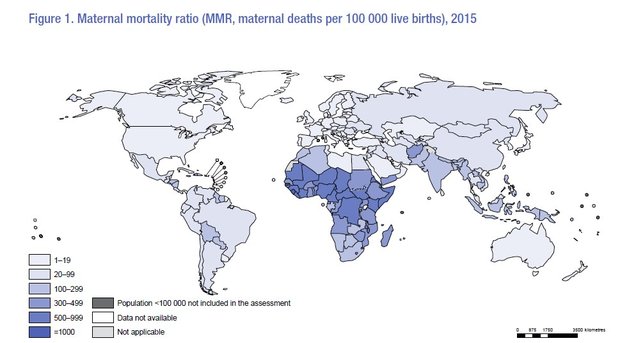Pregnancy-related deaths have fallen by almost half in the past 25 years, according to a report by United Nations agencies published in the British medical journal The Lancet. The document was prepared on the basis of assessments by WHO, UNICEF, UNFPA, the World Bank and the Population Division of the United Nations.
Around 303,000 women died of complications during pregnancy or up to six weeks after giving birth in 2015 - down from 532,000 in 1990. "This equates to an estimated global ratio of 216 maternal deaths per 100,000 live births, down from 385 in 1990," it said.
Officials from the World Health Organisation (WHO) said the results showed "huge progress".
As part of the Millennium Development Goals adopted in 2000, UN member states pledged to reduce maternal mortality by 75 percent by 2015 from 1990 levels.
However, only nine countries hit targets set by the UN.
"This report shows that by the end of 2015 maternal mortality will drop by 44% from its levels from 1990," said Dr Lale Say, coordinator for reproductive health and research at the WHO.
But she warned that the progress was "uneven" - with 99% of deaths happening in developing countries.
While 39 countries reported "significant progress" in reducing pregnancy-related deaths, only nine countries achieved their targets.
Sub-Saharan Africa saw nearly 45 percent fewer maternal deaths" over the period, the report said.
"Ensuring access to high-quality health services during pregnancy and child birth is helping to save lives," it said.
It said essential health interventions required include practicing good hygiene to reduce infection, injecting oxytocin hormone immediately after childbirth to reduce risk of severe bleeding, and identifying potentially fatal conditions like pregnancy-induced hypertension.
Eastern Asia saw the greatest improvement, with maternal mortality falling from approximately 95 to 27 per 100,000 live births.
The UN has now set a goal of reducing the global maternal mortality ratio to less than 70 per 100,000 live births by 2030.
But achieving that goal will require much more effort, said Dr Babatunde Osotimehin, executive director of the UN Population Fund (UNFPA)."Many countries with high maternal death rates will make little progress, or will fall behind, over the next 15 years if we don't improve the current number of available midwives and other health workers with midwifery skills. If we don't make a big push now, in 2030 we'll be faced, once again, with a missed target for maternal deaths," said Dr Babatunde Osotimehin.

Maternal mortality rate in Belarus has fallen from 33 in 1990 to 4 in 2015. Within 25 years maternal mortality in our country reduced to 87, 9%.
Today maternal mortality rate in Belarus is one of the lowest in the world. Belarus is just a little bit behind Iceland, Finland, Poland and Greece, were maternal mortality rate is 3 and takes the same position as Italy, Sweden and Czech Republic, were maternal mortality rate is 4.
In accordance with the data presented in the UN report maternal mortality rate in Belarus was reducing in average by 8, 1% annually (the level of credibility of calculations — 80%).
In Lithuania maternal mortality rate went down from 65, 5% in 1990 to 10 in 2015, in Latvia from 62, 5% to 18, in Russia from 60, 3% until 25, in Ukraine from 47, 8% to 24.

